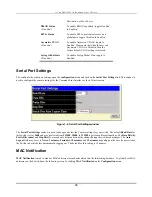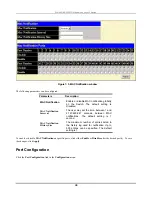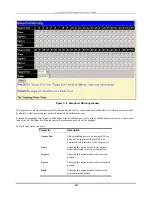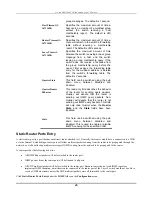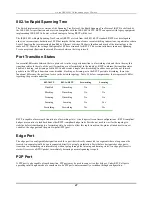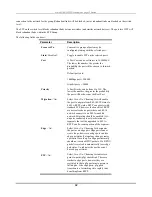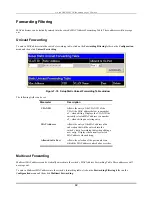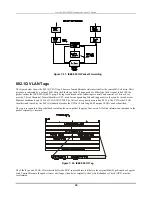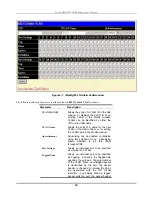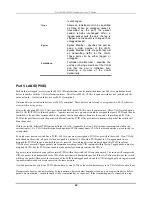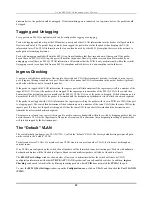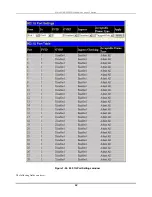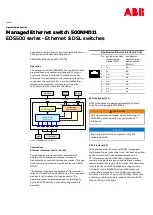
D-Link DES-3250TG Standalone Layer 2 Switch
802.1w Rapid Spanning Tree
The Switch implements two versions of the Spanning Tree Protocol, the Rapid Spanning Tree Protocol (RSTP) as defined by
the IEEE 802.1w specification and a version compatible with the IEEE 802.1d STP. RSTP can operate with legacy equipment
implementing IEEE 802.1d, however the advantages of using RSTP will be lost.
The IEEE 802.1w Rapid Spanning Tree Protocol (RSTP) evolved from the 802.1d STP standard. RSTP was developed in
order to overcome some limitations of STP that impede the function of some recent switching innovations, in particular, certain
Layer 3 function that are increasingly handled by Ethernet switches. The basic function and much of the terminology is the
same as STP. Most of the settings configured for STP are also used for RSTP. This section introduces some new Spanning
Tree concepts and illustrates the main differences between the two protocols.
Port Transition States
An essential difference between the two protocols is in the way ports transition to a forwarding state and the in the way this
transition relates to the role of the port (forwarding or not forwarding) in the topology. RSTP combines the transition states
disabled, blocking, and listening used in 802.1d and creates a single state: discarding. In either case, ports do not forward
packets; in the STP port transition states disabled, blocking, or listening, or in the RSTP port state discarding, there is no
functional difference, the port is not active in the network topology. Table 5-1 below compares how the two protocols differ
regarding the port state transition.
802.1d STP
802.1w RSTP
Forwarding
Learning
Disabled Discarding
No
No
Blocking Discarding
No
No
Listening Discarding
No
No
Learning Learning
No
Yes
Forwarding Forwarding
Yes
Yes
RSTP is capable of more rapid transition to a forwarding state – it no longer relies on timer configurations – RSTP-compliant
bridges are sensitive to feedback from other RSTP-compliant bridge links. Ports do not need to wait for the topology to
stabilize before transitioning to a forwarding state. In order to allow this rapid transition, the protocol introduces two new
variables: the edge port and the point-to-point (P2P) port.
Edge Port
The edge port is a configurable designation used for a port that is directly connected to a segment where a loop cannot be
created. An example would be a port connected directly to a single workstation. Ports that are designated as edge ports,
transition to a forwarding state immediately without going through the listening and learning states. An edge port loses its
status if it receives a BPDU packet, immediately becoming a normal spanning tree port.
P2P Port
A P2P port is also capable of rapid transition. P2P ports may be used to connect to other bridges. Under RSTP, all ports
operating in full-duplex mode are considered to be P2P ports, unless manually overridden through configuration.
47
Содержание DES-3250TG
Страница 1: ...D Link DES 3250TG Stackable Layer 2 Switch User s Guide ____________________...
Страница 106: ...D Link DES 3250TG Standalone Layer 2 Switch Figure 7 54 Access Rule Display window Packet Content Mask 96...
Страница 154: ...D Link DES 3250TG Standalone Layer 2 Switch Figure 9 21 Authenticator Status window 144...
Страница 186: ......



